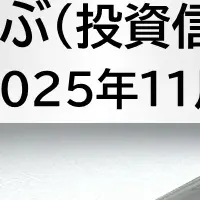
Calamos Introduces New Structured ETFs with 100% Downside Protection and Attractive Upside Cap Rates
Calamos Investments Launches New Structured ETFs
Calamos Investments, a prominent player in alternative asset management, has made waves in the financial sector by introducing two new Structured Protection ETFs. These products aim to provide both safety and growth potential for investors seeking exposure to the S&P 500 and Russell 2000 indices. The Calamos S&P 500® Structured Alt Protection ETF™ -- January (CPSY) features an upside cap rate of 7.57%, while the Calamos Russell 2000® Structured Alt Protection ETF™ – January (CPRY) boasts an even more attractive upside cap of 9.59%.
Launched on January 2, 2025, these ETFs come with the promise of 100% downside protection over a one-year outcome period, which runs through December 31, 2025. This is particularly appealing for investors who are concerned about market volatility but still want to capitalize on the equity market's long-term growth potential.
Understanding the Cap Rates
The structure of these funds is designed to appeal to both experienced investors and those who are newer to the market. The upside cap rates represent the maximum return that investors can achieve over the one-year period, offering a clear and straightforward investment thesis. For CPSY, the cap of 7.57% means that investors stand to benefit from moderate gains, protected against losses, while CPRY with its 9.59% cap offers even greater upside potential.
Calamos’ structured ETFs reset annually, allowing new annual caps to be established, which also refreshes the downside protection against negative returns. This strategic approach gives investors a continuous opportunity to engage with the markets without the same level of risk exposure typically associated with equities.
Advantages of the ETFs
One of the standout features of these ETFs is their low annual expense ratio of 0.69%, making them accessible to a broad range of investors. Additionally, the gains generated in these ETFs will grow tax-deferred, meaning that if held for over a year, they will be taxed at the long-term capital gain rates, which are generally more favorable than short-term tax rates. This tax advantage can provide significant benefits to investors looking to maximize their returns over time.
The ETFs are managed by Co-CIO Eli Pars and a dedicated Alternatives Team, ensuring that they benefit from Calamos’ decades of expertise in alternatives and risk management strategies. Both funds also track well-established reference instruments, the SPDR® S&P 500® ETF Trust (SPY) for CPSY and the iShares Russell 2000® ETF (IWM) for CPRY, providing a strong foundation for their performance.
Target Audience
These structured ETFs are particularly appealing not just to retail investors, but also to financial advisors and wealth management platforms that are seeking to provide their clients with capital-protected growth strategies. The structured nature of these products allows advisors to craft solutions that are tailored to those with risk-averse profiles or to hedge against current market uncertainties.
Conclusion
In conclusion, the launch of the CPSY and CPRY structured ETFs highlights Calamos Investments' commitment to innovation and meeting the evolving needs of today’s investors. By combining downside protection with the potential for moderate upside returns, Calamos is not just offering financial products; they are crafting solutions that align with contemporary investment strategies. As market conditions continue to change, these ETFs may serve as a vital component in a balanced investment portfolio.
Explore the full suite of Calamos Structured Protection ETFs to understand how they can fit into your investment strategy. For further inquiries or detailed product information, visit Calamos Investments' official website and keep abreast of how these innovative products are performing in the market.
Topics Financial Services & Investing)










【About Using Articles】
You can freely use the title and article content by linking to the page where the article is posted.
※ Images cannot be used.
【About Links】
Links are free to use.